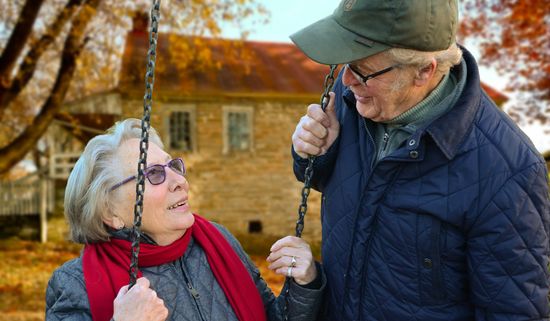As Philanthropy Grapples with an Aging Nation, Where do the Arts Fit In?
/
According to the Wall Street Journal, one of the hottest trends in franchising these days isn’t sit-down restaurants or real estate. It's seniors: "Providing home-health aides and other services to older Americans is a fast-growing business, as brands and franchise owners seek to capitalize on an aging U.S. population and low costs of entry."
If we're to believe the demographic data—and we do, by the way—it isn't much of a stretch to predict that the same can be said for the world of philanthropy: Seniors are the next big thing. But as always, the devil's in the details. What role will philanthropy play to ensure that seniors live healthy, engaging and meaningful lives?
For one answer, we turn to the San Francisco-based Aroha Philanthropies' Seeding Artful Aging initiative, which grants nearly $500,000 to 15 nonprofits to expand "artful aging" programs in the U.S. By inspiring and enabling older adults to "learn, make, and share the arts in ways that are novel, complex, and socially engaging," the initiative works to ensure that the "Golden Years" are indeed as advertised.
The program recently announced 15 winners for its most recent grant cycle. Winning programs include the Johnson City (Tennessee) Public Library's Fullness of Time: Exploring the Arts and the Gifts of Aging, the Albuquerque-based Keshet Dance Company's Fine Wine Dance, and Minnesota Opera'sVoices of Opera.
Grant awards range from $17,000 to $50,000 and will fund innovative programs to run between January 1, 2017 and November 30, 2017.
Two takeaways. here. Let's start with the most obvious one.
If you're an organization whose program offerings—and we're quoting Aroha Philanthropies here—"bring joy, connection, improved health and well-being, and a renewed sense of purpose to older adults in community and residential settings," then Seeding Artful Aging needs to be on your radar.
Second, while we often come across grants earmarked for elderly Americans, it's generally through the lenses of public health services or ongoing education. The concept of "artful aging" may be an extension of that latter category, but we'd argue that it's a different beast entirely, and one with a seemingly limitless ceiling.
And why is that? Glad you asked.
First off, of course, is the issue of demographics. As the Journal piece notes, the Census Bureau projects that by 2025, the number of Americans aged 65 and older will hit 66 million, up 38 percent from 2015.
Now, given this explosive growth, you'd think that philanthropists would be lining up outside the bingo hall, right? (Sorry, we couldn't resist.) Well, not exactly. Sure, grantmakers recognize the needs of this demographic, but again, their gifts generally fall outside the purview of the arts. In this sense they're certainly not alone.
But this dynamic may soon change.
This piece in Philanthropy New York encourages donors to take a second look at "artful aging" for one simple reason: it works. Research increasingly corroborates the notion that artful aging programs yield improvements in quality of life and health of older adults:
Older adults who participated in programs led by teaching artists resulted in fewer doctor visits, fewer falls, and less medication usage. Other research highlights the potentially protective effect of participatory arts to prevent dementia, reduce depression, and reduce social isolation.
In a philanthropic climate where performance metrics are donors' North Star, this is important stuff. Numbers (generally) don't lie, and grantmakers will certainly be intrigued if these programs can yield an impressive return on investment.
Which brings us back to a quote from our opening Wall Street Journal article.
Although Claudine Halpern, chief operating officer of My Elder Advocate LLC, was talking in the WSJ article about the lucrative franchising opportunities associated with an aging population, we feel her sentiment can apply to the emerging field of "artful aging" as well:
"There is no way to lose with the demographics we see. All of us are planning on living until 100."








